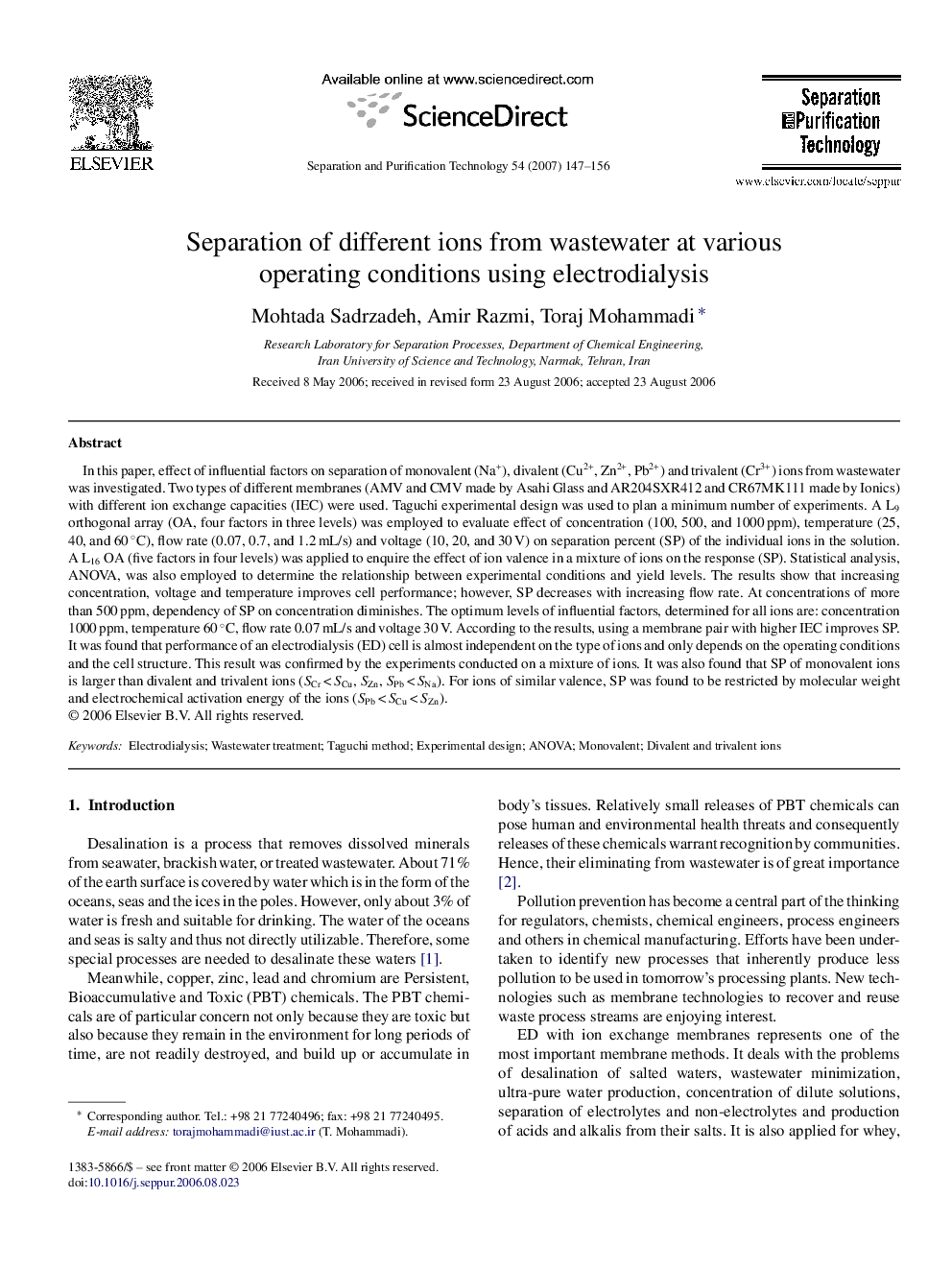| Article ID | Journal | Published Year | Pages | File Type |
|---|---|---|---|---|
| 644075 | Separation and Purification Technology | 2007 | 10 Pages |
In this paper, effect of influential factors on separation of monovalent (Na+), divalent (Cu2+, Zn2+, Pb2+) and trivalent (Cr3+) ions from wastewater was investigated. Two types of different membranes (AMV and CMV made by Asahi Glass and AR204SXR412 and CR67MK111 made by Ionics) with different ion exchange capacities (IEC) were used. Taguchi experimental design was used to plan a minimum number of experiments. A L9 orthogonal array (OA, four factors in three levels) was employed to evaluate effect of concentration (100, 500, and 1000 ppm), temperature (25, 40, and 60 °C), flow rate (0.07, 0.7, and 1.2 mL/s) and voltage (10, 20, and 30 V) on separation percent (SP) of the individual ions in the solution. A L16 OA (five factors in four levels) was applied to enquire the effect of ion valence in a mixture of ions on the response (SP). Statistical analysis, ANOVA, was also employed to determine the relationship between experimental conditions and yield levels. The results show that increasing concentration, voltage and temperature improves cell performance; however, SP decreases with increasing flow rate. At concentrations of more than 500 ppm, dependency of SP on concentration diminishes. The optimum levels of influential factors, determined for all ions are: concentration 1000 ppm, temperature 60 °C, flow rate 0.07 mL/s and voltage 30 V. According to the results, using a membrane pair with higher IEC improves SP. It was found that performance of an electrodialysis (ED) cell is almost independent on the type of ions and only depends on the operating conditions and the cell structure. This result was confirmed by the experiments conducted on a mixture of ions. It was also found that SP of monovalent ions is larger than divalent and trivalent ions (SCr < SCu, SZn, SPb < SNa). For ions of similar valence, SP was found to be restricted by molecular weight and electrochemical activation energy of the ions (SPb < SCu < SZn).
